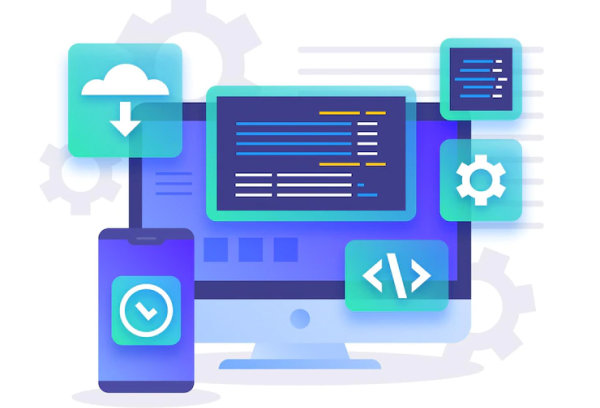The product development lifecycle, or PDLC, has migrated from project-based, large-scale deployments to continuous evolution. The DevOps culture helps bring businesses, development teams, and operations executives together to automate processes and streamline IT.
If you think your business can put DevOps on the back burner, it is missing the point. The fact is that customers today expect enterprises to roll out enhanced business capabilities. That way, enterprises will not only serve their customers better but also become relevant in today’s always-on digital world. And DevOps can help you get there at an astonishing velocity.
But enterprises should move beyond establishing a DevOps mindset. Instead, teams should implement DevOps practices across their PDLCs and truly bring this philosophy to life. Better yet, DevOps practices help fast-track, improve, and automate specific phases of the PDLCs, enabling organizations to adopt continuous evolution at their pace. On the other hand, some of these practices may span different phases of a PDLC, empowering teams to create a seamless and optimized process that boosts productivity.
In this explainer, we will give you a rundown on DevOps practices that you should deploy throughout your PDLC. Let us get started.
DevOps Practices That Matter
CONTINUOUS INTEGRATION AND CONTINUOUS DELIVERY (CI/CD)
Continuous Integration or CI is focused on the development phase that features creating and testing code. It is fully automated. Every time you commit code, the changes will be validated and merged in the master branch. Eventually, the code will be packed inside a build artifact. On the contrary, continuous delivery or CD streamlines the delivery phrase. Under CD, every time a fresh build artifact is made available, it is automatically positioned inside the desired ecosystem and deployed.
The two DevOps practices are big on automation. These two practices ensure high-quality code delivery to customers at the speed they want. Continuous integration, continuous deployment, and continuous delivery help automate aspects of the product development and delivery phases. Every practice takes automation a step further, and it all begins with continuous integration. Moreover, these practices help the development executives to roll out a new feature, fix bugs, and carry out other enhancements at a tremendous speed and accuracy.
VERSION CONTROL
This DevOps practice helps manage code in different versions. Whenever a development team adopts this practice, it finds that tracking revisions and modifying the history will simplify code review and recovery. Development teams leverage different version control ecosystems, including Git, to implement this practice. These systems enable developers to collaborate effectively in authoring code.
Besides, these systems offer a crystal-clear process to merge code changes that happen within the same files. That way, it will be easier to handle conflicts and undo changes to earlier versions. Version control is one of the fundamental DevOps practices, enabling development teams to collaborate, divide coding tasks among team members, and store code for quick and simple recovery whenever required. Last, version control is integral to the success of other practices, including Infrastructure as Code (IaC) and CI.
AGILE SOFTWARE DEVELOPMENT
Agile is an important part of the product development approach. This philosophy underscores the value of user and customer feedback, team collaboration, and incredibly high responsiveness to change. And Agile manages to do all of this by shortening the release cycle. Teams that follow Agile provide continual changes and deliver visible improvements to customers, gather their feedback, and adjust the product quality or development process according to their needs.
Moreover, Agile is different from other traditional frameworks, such as Waterfall, that focus on long release cycles. And these release cycles, in turn, are marked by sequential phases. For your information, Scrum and Kanban are also two common frameworks that are closely linked with the Agile methodology.
INFRASTRUCTURE AS CODE
IaC that expands to Infrastructure as Code defines different topologies and system resources descriptively. That is how the development teams are allowed to manage the resources, just like the way developers would manage code repositories. Better yet, these definitions can be easily stored and versioned inside multiple version control ecosystems. These systems will help teams review the resources and topologies and return them to a previous state, similar to the way developers do with code.
Following IaC empowers teams to deploy system resources in a repeatable, controlled, and reliable way. This practice automates the deployment process and minimizes the risk of errors, especially for complicated large-scale ecosystems. This is a reliable solution for environment deployments that thrive on iterations. Embracing IaC also enables teams to maintain development and testing ecosystems that are similar to production. Eventually, duplicating these ecosystems to multiple cloud platforms and data centers becomes more efficient and simpler.
CONFIGURATION MANAGEMENT
This practice is all about managing the state of different system resources, comprising databases, virtual machines, and severs. Leveraging configuration management tools, development teams can launch changes in a systematic, controlled way. That way, the team will bring down the risk of modifying different system configurations.
Development teams should harness multiple configuration management tools for tracking the system state and for helping minimize configuration drifts. The avoidance of drifts becomes all the more important, given the fact that the configuration of system resources often deviates from the desired state with time. When configuration management is teamed with IaC, both configuration and system definition will become simple to automate and templatize. In the end, that is how teams will be ready to operate in complex environments at a tremendous scale.
CONTINUOUS MONITORING
Continuous monitoring means getting the capability to have real-time, complete visibility into the health and performance of the technology stack used for building a product. This stack comprises the information on the underlying infrastructure that powers the product to its high-level software components.
The visibility control includes a group of metadata and telemetry along with setting alerts for multiple predefined conditions. These conditions, in turn, demand the attention of the operator. On the other hand, telemetry features logs and event data gathered from different parts of the system. These datasets are stored in a place where they can be queried and analyzed at speed. High-performance DevOps specialists make sure that they set meaningful, actionable alerts and gather rich telemetry. That way, these specialists draw insights from vast enterprise data lakes. Last but not least, these insights will also enable development teams to resolve issues in real time and discover the way forward for improving the product in future development lifecycles.
Unleashing Continuous Evolution For Your Enterprise With DevOps
Knowing DevOps practices is one thing, but implementing them and measuring their success rates pose a different challenge. If your business is unsure how to go about integrating the DevOps culture and deploying its practice, then now is the time to get a global technology leader on board.
A trusted global technology leader, we have years of experience in the development, operations, cybersecurity, and testing domains. Owing to our excellent track record, we have refined our DevOps practice for market-leading startups and Fortune 500 companies.
Our DevOps-as-a-Service model has helped businesses deploy new software at speed continuously. Besides, the speed of software delivery does not mean the end product’s quality will take a hit. Instead, our DevOps developers ensure that the product delivery is made with fewer failures and rollbacks.
Our engineers have expertise in working with different technology stacks that support businesses to embrace DevOps confidently and quickly. We have deep expertise in a DevOps technology stack, comprising Puppet, PowerShell, Jenkins, Kubernetes, Ansible, GitHub, Capistrano, Docker, and more.
Thanks to our technical capabilities, we have helped businesses:
- Optimize their PDLCs with continuous integration
- Accelerate deployment process with continuous deployment
- Engineer a development vector with continuous feedback
- Use release management to streamline the release process from end to end
- Leverage automated platforms and tools to assemble and manage different systems
- Measure everything that is important in PDLCs with continuous improvement
- Strengthen their security posture with advanced DevSecOps practices
Connect with one of our DevOps engineers today and uncover the process of aligning the speed of product development with the pace of doing business.


 Vishal
Vishal



